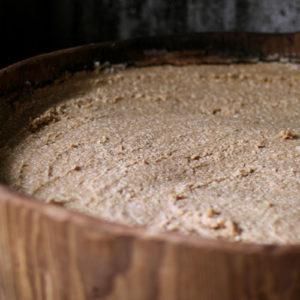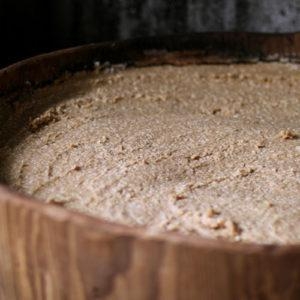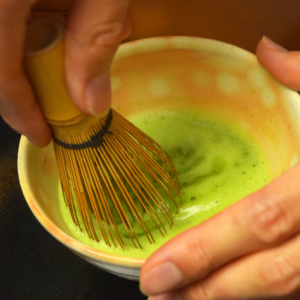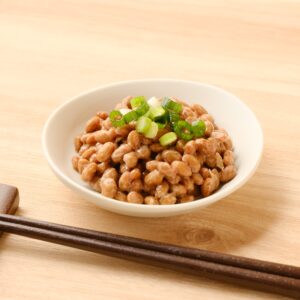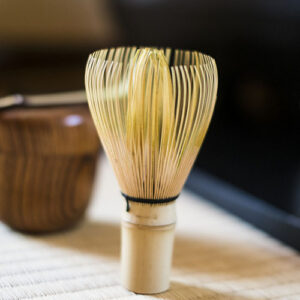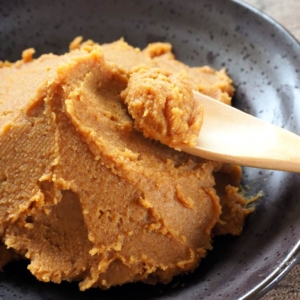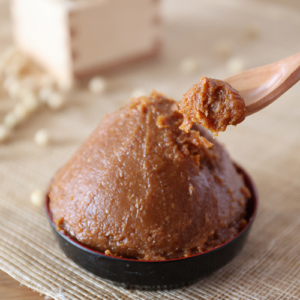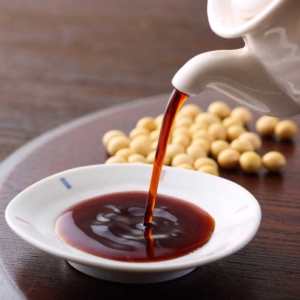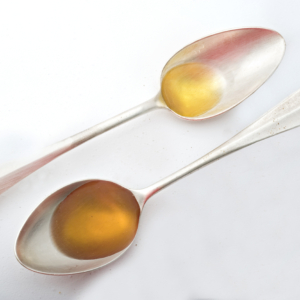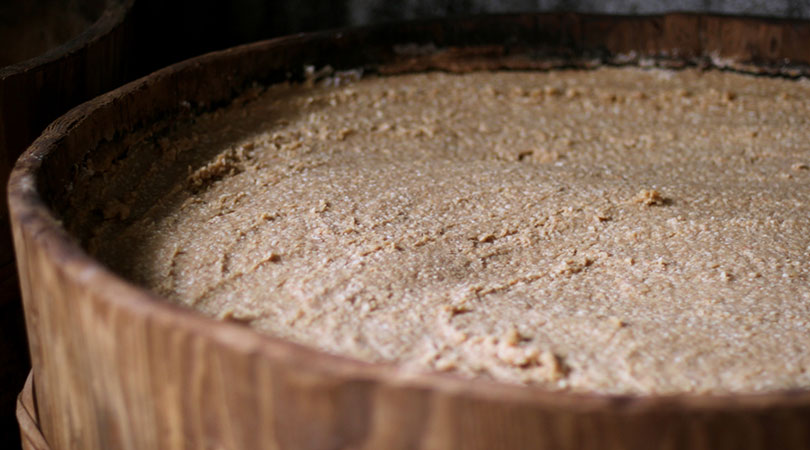
Miso is a fermented soybean seasoning that has a deep relationship with Japanese eating habits.
As there are a wide variety of miso soup and miso dishes, are there people who have never tasted miso yet?
This time, we will tell you in detail about miso paste nutritional facts, health benefits, and how miso is made.
What is Miso?
Miso is a seasoning in a form of a paste that is made by adding salt and koji into steamed soybeans, rice, or barley, then aged for a period of time. The matured miso comes in many colors from white to dark brown. It is rich in taste with strong umami and probiotics making it perfect as the healthy, all-purpose seasoning.
Various types of miso are produced in various regions of Japan, and they are often used for local cuisine in those regions.
Miso first appeared in Japanese history books in the year 901 (year 4 of the Shōtai Era). By this time, the production method of chiang and gǔ from China had been spread in Japan, and it’s believed that the original seasoning of Japanese “Miso” was born.
Miso Soup
Miso soup (Japanese: 味噌汁 “miso shiru) is a soup that consists of a variety of vegetables and other ingredients cooked with miso (miso paste). Miso soup is made from fermented food (miso paste) which makes it’s special with various characteristics that other soups don’t have, and it’s also appreciated from old times to modern times because of its nutritional aspect.
Miso soup has been eaten as an adjunct to rice since the Kamakura-Muromachi period, and it is one of the basic menus of Japanese food until this modern times.
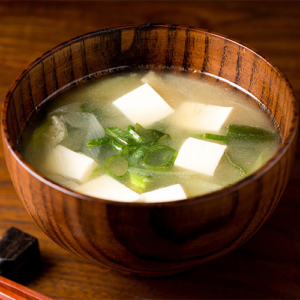
Nutrients In Miso & Miso Soup
・Protein・Vitamin B2・Vitamin B12・Vitamin E・ Vitamin K・Dietary fiber・Enzyme ・Saponin ・Trypsin inhibitor ・Isoflavone・Lecithin・Choline・Prostaglandin E・Brown pigment

Miso Nutrition Facts
1 Tbsp (15g) of Miso Contains*:
Calories 28
Total Fat 0.9g (0% DV)
Saturated Fat 0g (0% DV)
Trans Fat 0g
Cholesterol 0mg (0% DV)
Sodium 732mg (31% DV)
Total Carb 3.2g (1% DV)
Fiber 0g (0% DV)
Total Sugars 0g
Protein 18.7g
* May differ depending on the brand
Health Benefits of Miso & Miso Soup
Almost all of the misos are made with soybeans and koji. Both soybeans and koji are super healthy ingredients. Furthermore, it is said that the fermentation process in miso makes this versatile seasoning more nutritious.
It has been found in recent research that this miso, which contains both soybean and koji starter culture (Aspergillus oryzae) is rich in nutrient components that have good effects on the human body as follows:
1. Helps Digestion
Miso has the capability to help digestion, especially raw natural miso as they have live enzymes and probiotics that can help the body to digest and absorb nutrients better.
The probiotics in raw miso are the “good” bacteria to help improve the gut flora and generally improve our gut health. If you want to get the most benefits of miso, please consume the raw/unpasteurized miso.

2. Diabetes Prevention Effect
It has been found that the brown pigment (melanoidin) of miso has postprandial blood sugar reducing effect. It seems that this effect is stronger as the miso’s color is darker.
It has also been suggested that it may lower blood sugar levels by facilitating pancreatic function.
Deputy President of Kagawa Nutrition University / Gomyou Toshiharu

3. Suppression of Cholesterol Level
It is known that the component “Saponin ” contained in soybean has the effect of lowering blood cholesterol. As the substance is still functioning even after the soybean is processed into miso, it can be said that miso has the effect of suppressing the level of cholesterol.
Deputy President of Kagawa Nutrition University / Gomyou Toshiharu

4. Anti-aging Effect
Active oxygen is one of the causes of aging and disease. Saponin has been reported to work to eliminate these kinds of reactive oxygen and reduce the risk of diseases. Consuming miso is also said to be able to increase your immune system.
Deputy President of Kagawa Nutrition University / Gomyou Toshiharu

5. Osteoporosis Prevention
Isoflavones, which are famous for their abundant nutritional components in soybeans, act on female hormones and are able to prevent osteoporosis, which is causing low bone-density.
Deputy President of Kagawa Nutrition University / Gomyou Toshiharu

6. Cancer Prevention
Studies have shown that the antioxidant effect of miso is effective to prevent cancer and other diseases. In particular, the effect on gastric cancer is remarkable, and it’s said that it’s also effective on gastric ulcers.
Deputy President of Kagawa Nutrition University / Gomyou Toshiharu

Salt Content in Miso Soup: Is It High and Bad for Health?
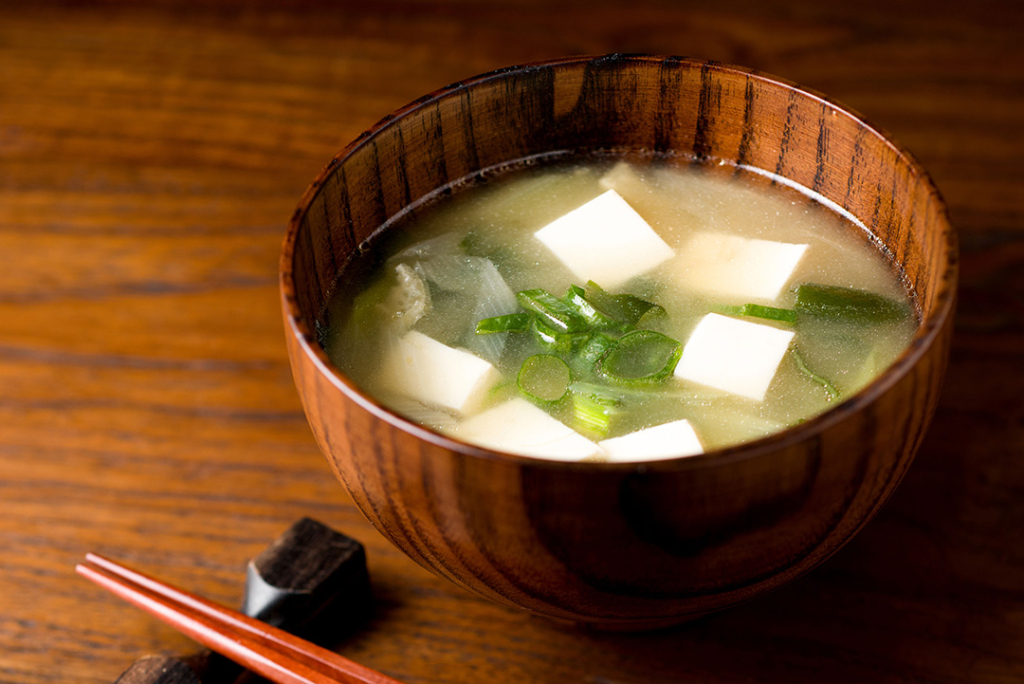
Some people refrain from miso soup to limit the salt content, but the truth is the amount of salt per bowl of miso soup is only about 1.2g. The recommended daily intake of salt is less than 8.0g for men and less than 7.0g for women, so you needn’t worry about the salt content if you have one cup per meal.
For those who are still worried, we recommend you to eat miso soup with pottasium-rich ingredients such as spinach, potatoes, to prevent the absorption of salt into the body. In addition, wakame seaweed, burdock, and konjac, which are high in dietary fiber, also help to eliminate salt.
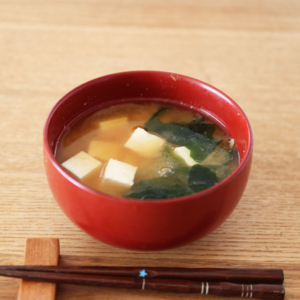
How Miso is Made: Introducing the Traditional Producing Method of Miso
Miso is produced by boiling and crushing soybeans, then fermenting them in a cool and dark place called “miso storehouse”. It seems that this method has hardly changed since the Edo Period.
We will introduce you to the traditional and deep, producing method of miso.
1. Simmering the Soybeans
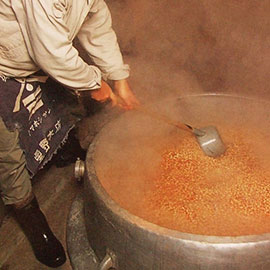
Simmer the soaked soybeans overnight in a large pot. It can also be done by steaming at high pressure with a pressure cooker.
2. Crushing the Soybeans
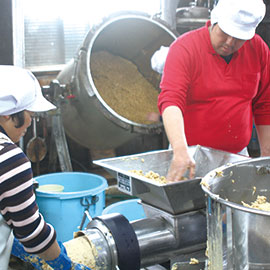
Smash the boiled and softened soybeans with a machine. Crushing the soybeans will also give the effect of stimulating the fermentation process.
3. Mixing the koji and salt

Prepare the fermentation by mixing crushed soybeans, koji, and salt.
4. Miso Preparation at Storehouse

Prepare miso in the large wood barrels in the miso storehouse.
5. Fermenting the Miso
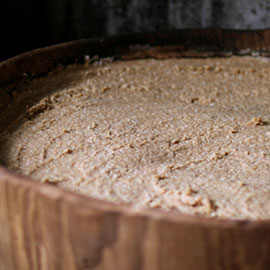
Let the miso which is prepared in barrels storehouse fermented.
It’s said that it’s good to do the preparation of miso-making around January.
6. The Completion of Miso
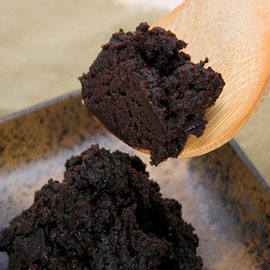
Miso is completed around October to November when the temperature is decreasing.
How to Make Homemade Miso?
You can make miso at home if it’s in a small amount. It’s pretty easy to make miso at home by preparing a storage container (can also be made of plastic) after mixing the ingredients of soybean, koji, and salt.
By experiencing the process yourself, you can choose the best ingredients and feel the distinctly delicious miso paste you can’t find in the commercially sold miso. Let’s try making miso at your home!

We also sell Handmade Miso Set that will support the making of miso at home.
Please take a look here:
How to Use Miso Other Than For Miso Soup
Not only as a base seasoning for miso soup and ramen, but you can also use miso paste for marinade, sauce, or dressing. Find a wide variety of recipe ideas below.
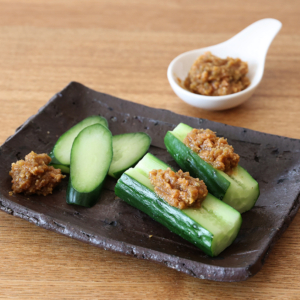
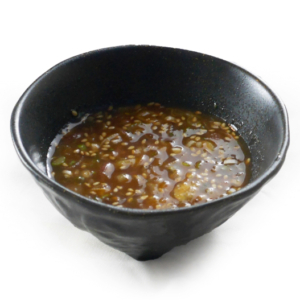


About the Expiration Date of Miso
For the usual miso available in the market, the best-before date is about 6 months until it’s expired.
Since it’s a “best before” date (not the expiry date), basically, you can eat it even after several days past the date.
However, depending on the storage conditions, the fermentation process happening inside miso maybe continue to progress and will cause the miso to be spoiled.
For example:
• When opened and stored at room temperature
• Unopened but stored at normal temperature in summer
etc.
If you have opened the miso, be sure to put it in the refrigerator and do not store it at normal room temperature. Especially during the hot summer season. Miso is originally considered to be a seasoning that has much salt content and not easily be spoiled/rotten. However, in humid seasons, mold may grow.
In addition, if it’s placed at a place with high temperature, fermentation will continue to proceed and the flavor and taste of miso will be lost.
The best delicious time to eat miso is before the best-before date and it’s important to store it in the right place to enjoy the most delicious miso.
Miso FAQ
Product Recommendation
Also Available On Amazon USA
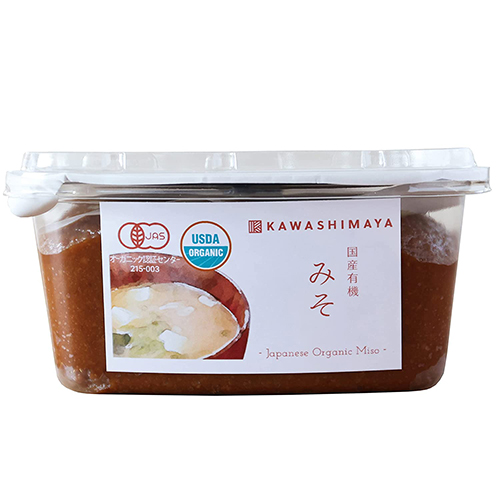
Organic Miso Paste 450g (15.8oz) USDA & JAS Certified, Additives-Free, Raw Probiotic, Traditionally Made in Japan
The genuine Japanese miso paste for greater umami in daily recipes. Characterized by a rich and mellow flavor that natural, old-fashioned fermentation method can only produce. USDA & JAS Organic certified, additives-free, no MSG, gluten-free, and vegan friendly. Made in Japan.
Price: $27.62

